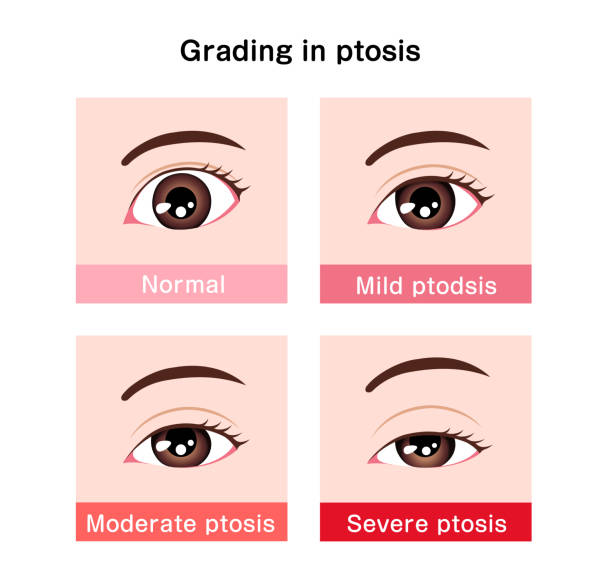Ptosis
- Home
- Ptosis
Ptosis
Ptosis: Understanding, Symptoms, Treatment, and Care
Ptosis, also known as droopy eyelid, is a condition where the upper eyelid droops over the eye. This can affect one or both eyes and may block your vision. Understanding ptosis is important, especially if it starts to affect your daily life.
What Is Ptosis?
Ptosis occurs when the muscles that lift the eyelid are weak or damaged. It can be present at birth (congenital) or develop later in life (acquired). The condition can range from mild to severe, depending on how much the eyelid droops.

Types of Ptosis
There are different types of ptosis based on the cause and when it develops:
- Congenital Ptosis: Present at birth, this type is due to poorly developed eyelid muscles.
- Acquired Ptosis: Develops later in life, often due to aging, injury, or medical conditions.
- Neurogenic Ptosis: Caused by nerve problems, such as in conditions like Horner's syndrome.
- Myogenic Ptosis: Due to muscle diseases like myasthenia gravis.
- Aponeurotic Ptosis: Related to aging, where the muscles become weak or stretched.
Symptoms of Ptosis
The most common symptoms of ptosis include:
- Drooping eyelid
- Difficulty keeping the eye open
- Eye strain or fatigue
- Double vision (in some cases)
- Headache or brow ache from trying to lift the eyelid
Ptosis Treatment Options
Treatment for ptosis depends on the severity and the cause. Common options include:
Ptosis Treatment Options
Treatment for ptosis depends on the severity and the cause. Common options include:
- Observation: Mild ptosis that does not affect vision may not need immediate treatment.
- Non-Surgical Methods: Eyelid exercises or special glasses may help in some cases.
- Surgery: The most effective treatment, especially for moderate to severe cases. Surgery involves tightening or repairing the muscles that lift the eyelid.
Advantages of Ptosis Surgery
Surgery to correct ptosis offers several benefits:
- Improved vision by lifting the eyelid
- Enhanced appearance by reducing the droopy look
- Boost in confidence and self-esteem
- Reduced eye strain and headaches
Post-Treatment Care
After ptosis surgery, proper care is crucial to ensure a smooth recovery:
- Follow the doctor's instructions carefully.
- Keep the surgical area clean and avoid rubbing the eyes.
- Use prescribed eye drops or ointments as directed.
- Avoid strenuous activities for a few weeks.
- Attend follow-up appointments to monitor healing.
FAQ's
In some mild cases, ptosis may improve without treatment, but often it requires medical
intervention.
Yes, ptosis surgery is generally safe, especially when performed by an experienced
surgeon. Like any surgery, there are risks, but complications are rare.
Most people recover within 1-2 weeks, but full healing may take a few months.
Congenital ptosis cannot be prevented, but acquired ptosis may be avoided by
protecting the eyes from injury and managing underlying health conditions.
If ptosis affects vision, insurance may cover the surgery. It’s best to check with your
insurance provider.
